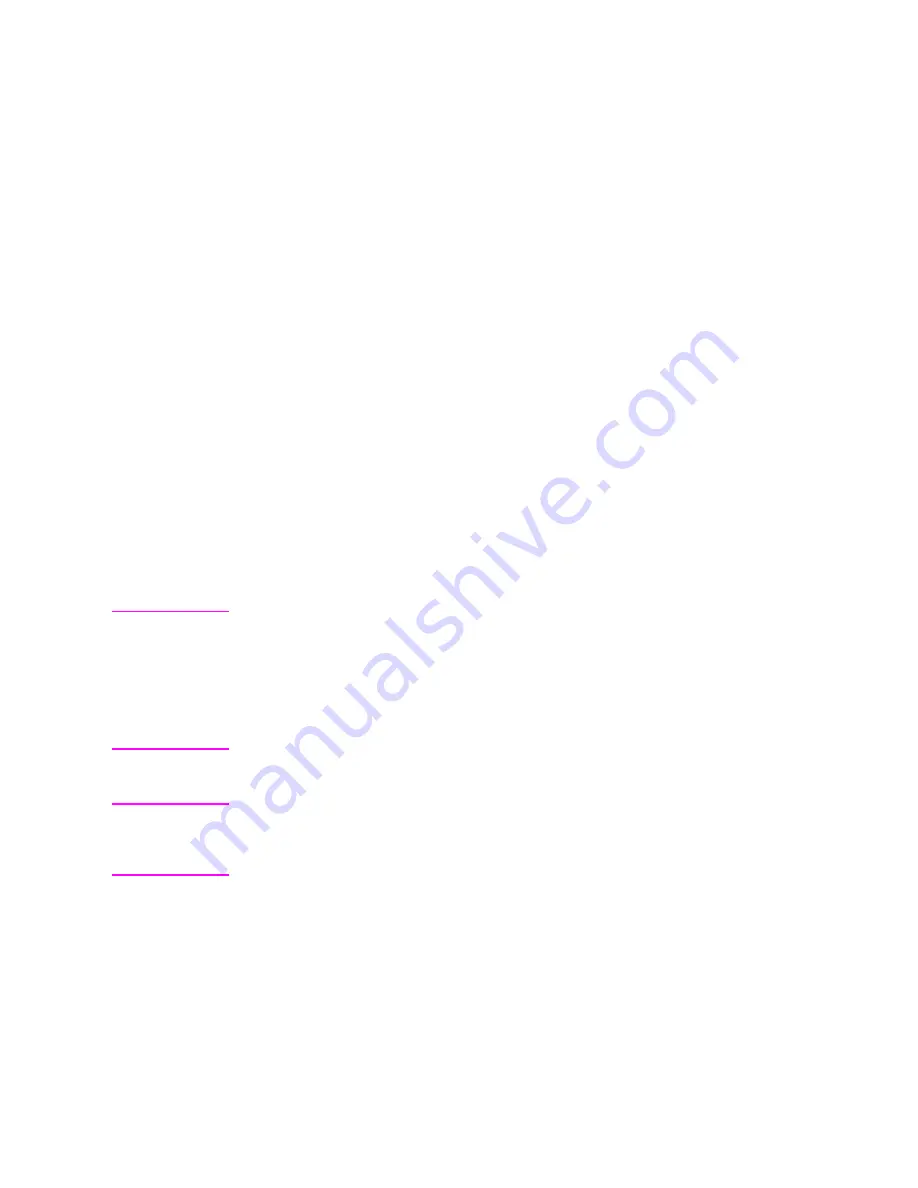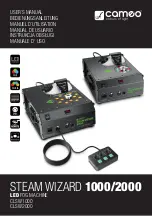
EN
Introduction 16-5
Status Response
When the printer receives a status request (command), it processes
that request and forms the response data. This data is then stored in
an I/O status buffer. The response is saved in this buffer until it is
either read (by any user) or the printer is turned off.
In addition to clearing the status buffer by reading the status response
or by turning off the printer, status responses are cleared if one the
following settings are changed:
z
Printer resolution (600/300)
z
Page protection
z
Language personality
Status requests and their associated response are processed in the
order in which they are received.
The number of responses the printer can buffer varies, depending on
internal printer operations. When requesting status, especially in the
case where multiple applications or users are sharing one printer, HP
recommends that you request one item, and then read its response
prior to making another request.
Note
Since the printer may contain a status response requested by a
previous application’s operation, it is important to use the Echo
command (described later in this chapter) to synchronize your
application’s request with the printer’s responses. Refer to the
Echo command description and to the “Programming Hints”
section at the back of this chapter for additional information.
Note
The number of status responses a printer can buffer varies from
printer to printer. The HP LaserJet 4 printer can store 5 responses.
Refer to the PCL 5 Comparison Guide for printer specific information.
A status response is returned to the printer I/O port from which it was
requested.
Summary of Contents for LaserJet 4100
Page 1: ...Part I Click here to access Part II on hp com ...
Page 2: ......
Page 26: ...Contents 14 EN ...
Page 44: ...2 10 The Page EN ...
Page 54: ...3 10 The Print Environment EN ...
Page 70: ...4 16 PCL Job Control Commands EN ...
Page 80: ...5 10 Page Control Commands EN Figure 5 3 Changing Print Direction on a Page ...
Page 82: ...5 12 Page Control Commands EN Figure 5 4 Text Area Within the Page ...
Page 110: ...6 16 Cursor Positioning EN ...
Page 120: ...7 10 Fonts EN Figure 7 11 Bitmap Character Figure 7 12 Scalable Character ...
Page 122: ...7 12 Fonts EN ...
Page 152: ...8 30 PCL Font Selection EN ...
Page 166: ...9 14 Font Management EN ...
Page 182: ...10 16 User Defined Symbol Sets EN ...
Page 237: ...EN Character Descriptor Formats 11 55 Figure 11 5 Class 2 Character Data ...
Page 240: ...11 58 Soft Font Creation EN Figure 11 6 Portrait Character Example ...
Page 241: ...EN Character Descriptor Formats 11 59 Figure 11 7 Landscape Character Example ...
Page 270: ...13 4 The PCL Print Model EN Figure 13 3 Effect of Transparency Modes on Images ...
Page 276: ...13 10 The PCL Print Model EN Figure 13 4 Shading Patterns ...
Page 277: ...EN Pattern ID Area Fill ID Command 13 11 Figure 13 5 Cross Hatch Patterns ...
Page 290: ...13 24 The PCL Print Model EN ...
Page 297: ...EN Pattern ID Area Fill ID Command 14 7 Figure 14 1 Shading Patterns ...
Page 298: ...14 8 PCL Rectangular Area Fill Graphics EN Figure 14 2 Cross hatch Patterns ...
Page 341: ...EN Raster Graphics Example 15 33 Figure 15 11Example of Raster Graphic Image Data ...
Page 342: ...15 34 Raster Graphics EN ...
Page 370: ...16 28 Status Readback EN ...
















































